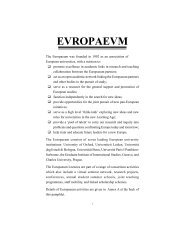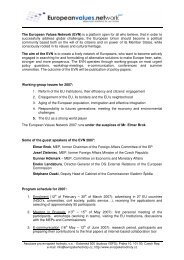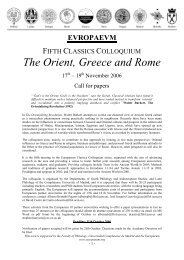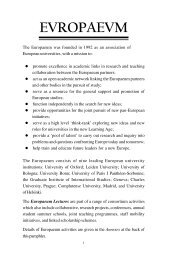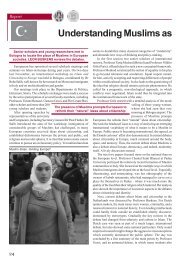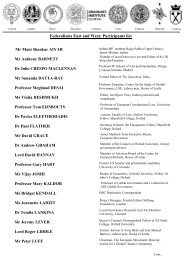Authors Iain Begg | Gabriel Glöckler | Anke Hassel ... - The Europaeum
Authors Iain Begg | Gabriel Glöckler | Anke Hassel ... - The Europaeum
Authors Iain Begg | Gabriel Glöckler | Anke Hassel ... - The Europaeum
Create successful ePaper yourself
Turn your PDF publications into a flip-book with our unique Google optimized e-Paper software.
<strong>The</strong>re is also little serious controversy about the fact that economic cohesion<br />
and solidarity should lead to a redistribution function in the budget. <strong>The</strong><br />
aim is to ensure that regions which are economically backward should be<br />
helped to close the gap with richer and more dynamic regions in the Union.<br />
<strong>The</strong> debate here is less about the principle of solidarity but more about the<br />
way in which the principle is being interpreted. Redistribution which is<br />
passing money from the EU budget to the richer member states can hardly<br />
be considered as a function of the principle of solidarity.<br />
<strong>The</strong> EU budget should also treat current expenditure separately from<br />
investment. At present an EU investment in a project such as Galileo or in<br />
the trans-European networks is treated in the same way as a direct income<br />
subsidy to farmers. This ignores the fact that the investment will bring a<br />
stream of returns over the medium and long term.<br />
Structural weaknesses in the way in which the financial framework is<br />
determined are also frequently criticised. Many observers feel that the<br />
budget of the European Union should be constructed from the bottom up.<br />
This means that the budgetary requirements of agreed policies of the<br />
Union should be calculated and the overall level of the financial framework<br />
should simply be the addition of these necessary budgetary expenditures.<br />
In reality however, recent financial frameworks have been limited by the<br />
net contributors to the budget, who have set an upper limit to the<br />
expenditure prior to the negotiation taking place-in other words a top<br />
down approach.<br />
While the bottom up approach has a clear logic, the reason for the<br />
dominance of the top-down approach is obvious. Two of the Union<br />
institutions, the European Parliament and the European Commission,<br />
have a clear interest in having as large a budget as possible, because both<br />
of these institutions are in effect spending authorities but without the<br />
need to raise the funding for the expenditure themselves. In the Council of<br />
Ministers the net beneficiaries of the budget also have less reason to<br />
restrict the size of the budget than the net contributors who will bear the<br />
greatest pain from a larger budget. It is therefore clear why the main net<br />
contributors stated clearly before the negotiation of the 2007-2013<br />
financial frameworks that they were not prepared to agree a budget above<br />
1% of GNI.<br />
On the own resources side of the budget, there are two major areas of<br />
criticism. <strong>The</strong> first concerns the system of budgetary rebates, which aim to<br />
Chapter 4 – Alan Mayhew 69




